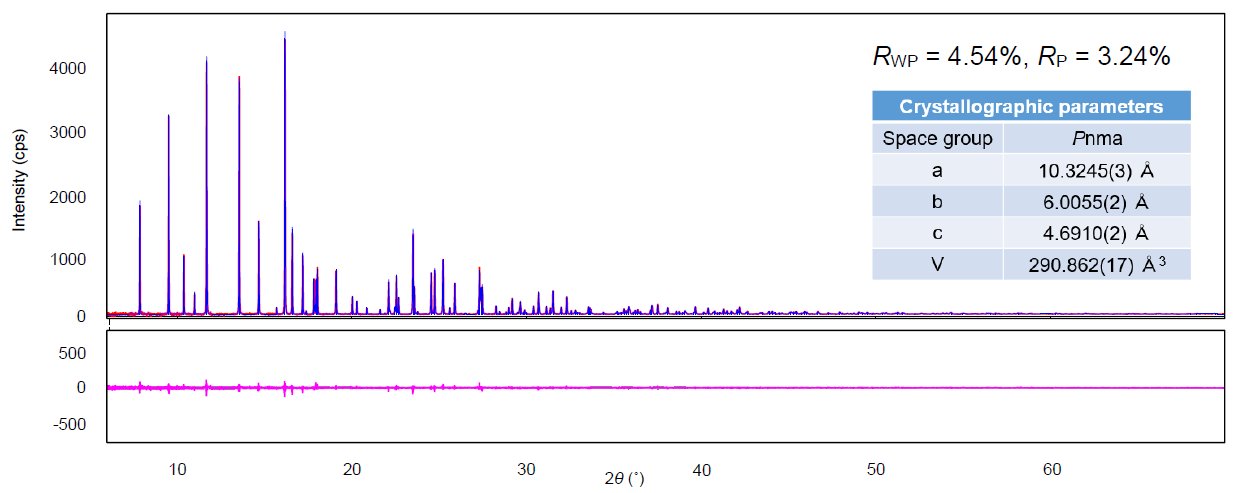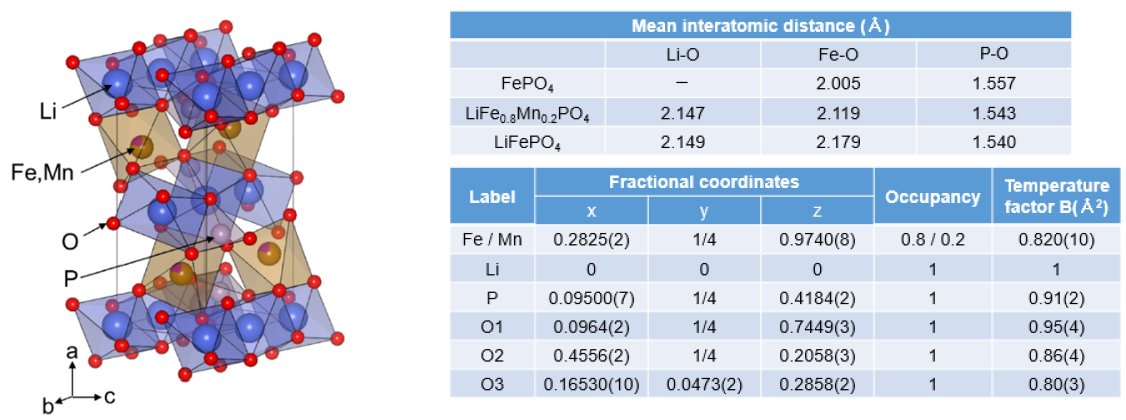Rietveld Analysis of Battery Material using a Mo Source
Introduction
Olivine-type lithium compound, known as a positive electrode material for lithium-ion secondary batteries, has an advantage in thermal and chemical stability during charging and discharging processes, as well as in economic efficiency, since it does not contain expensive transition metals. Therefore olivine-type lithium compound is promising as a positive electrode material for next-generation batteries. Currently, other higher-performance materials are being developed by dissolving different metals into the solid solution and substituting them to enhance their electric properties.
Measurements and results
Olivine-type lithium compound Li(Fe₀.₈Mn₀.₂)PO₄ contains Mn dissolved into the solid solution of Fe sites to enhance the electric properties. Since these properties depend on the crystal structure, the Rietveld method is applied to the crystal structure analysis to obtain various data. The sample Li(Fe₀.₈Mn₀.₂)PO₄ contains Fe and Mn. Thus, if CuKα radiation is used in transmission XRD measurement, the results show low diffraction intensity due to the high absorption rate of these elements. However, if MoKα radiation, which has a high transmission rate, is used, a high quality XRD pattern with high intensity and low background is obtained. Figure 1 shows an X-ray diffraction pattern and a crystal structure analysis result obtained by using a Mo source, and Figure 2 shows a crystal structure model and mean interatomic distances. These results indicate that measurement with a Mo source, which has high transmission power, allows us to accurately analyze even a small change in interatomic distance due to the solid solution.
 Figure 1: Result of Rietveld analysis of olivine-type lithium compound Li(Fe₀.₈Mn₀.₂)PO₄
Figure 1: Result of Rietveld analysis of olivine-type lithium compound Li(Fe₀.₈Mn₀.₂)PO₄
 Figure 2: Crystal structure model and mean interatomic distance of olivine-type lithium compound Li(Fe₀.₈Mn₀.₂)PO₄
Figure 2: Crystal structure model and mean interatomic distance of olivine-type lithium compound Li(Fe₀.₈Mn₀.₂)PO₄

Contact Us
Whether you're interested in getting a quote, want a demo, need technical support, or simply have a question, we're here to help.
